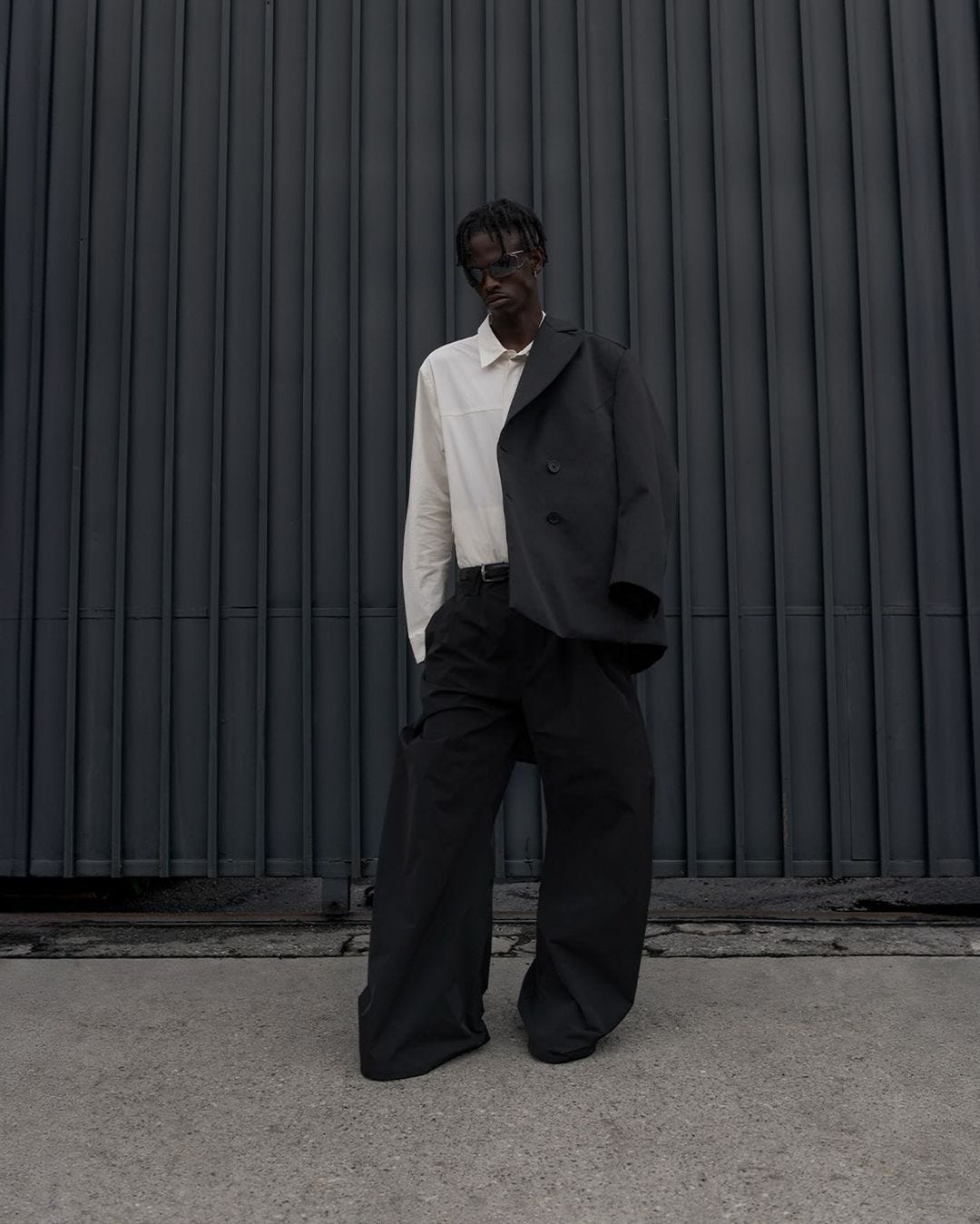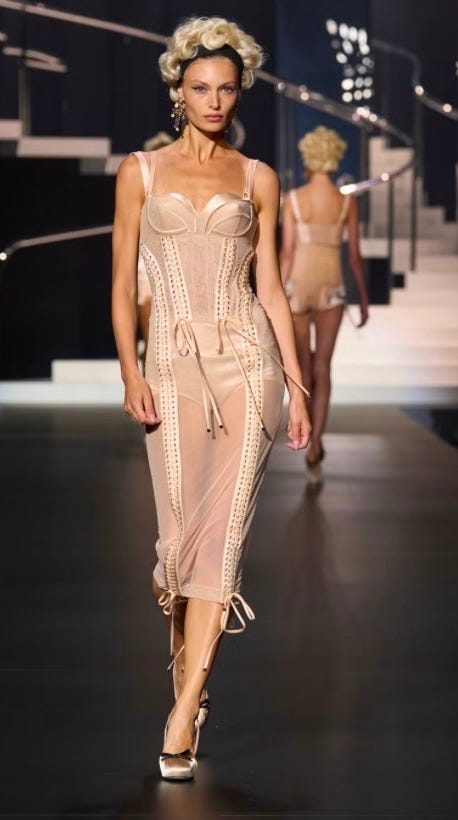Q̾u̾i̾c̾k̾ ̾F̾i̾r̾e̾: Fashion month’s simplicity fetish
Has simple clothing reached its breaking point?
For this week’s Quick Fire, fashion writer Alexandra Hildreth shares her hot takes from the industry’s busiest month, from the realities of a post-brand world to sighs of relief for sex appeal. One thing’s for certain: it's a race to the bottom for fashion’s most simple.
As a self designated “fashion person,” it can be difficult to pinpoint why brands like Khaite get filed away to a passé part of my brain while someone like Aaron Esh makes me sit up a little straighter, and scroll on Vogue Runway with a little more intent. While Esh’s design philosophy has been compared by some of the biggest industry insiders to McQueen’s early shows, recalling the defiant styling,punk attitudes and infamous bumster pants from Spring/Summer 1994’s “Nihilism”, a financial powerhouse brand like Khaite remains a favorite for ultra-luxe wardrobe basics amongst wealthy downtown influencers who peddle Amazon dupes in their wake. Maybe it’s fashion snobbery and a need to feel “in the know” about an up and coming young designer, one who has been deemed “cool” and the harbinger of “new-wave-sleaze,” or maybe the staunchly unique sex appeal of Esh’s clothes come as an immense relief from fashion’s rising monoculture.
At the farthest, most zoomed out glance, both brands hinge on different degrees of simplicity– a simplicity that has dominated and neutered countless collections over countless designers in the past few years, and one that I hope has reached a breaking point this season. Writers like Noah Johnson from GQ have referred to the landscape as a “post-brand” world, and he’s right. For many brands, clothing has become a first-past-the-post race to duplicate the blank slate upon which The Row’s success rests. “Stealth wealth”, “quiet luxury”, and even “subversive basics”, have set their courses towards logoless suits, expensive tank tops, and studded leather Mary Janes in order to sell their customers a one-size-fits-all vision of chicness.
Simplicity obviously sells, especially during times of economic hardship where factoring in cost per wear increases massively, but for luxury designers, who have all the money in the world to convince us to buy what they’re selling, why does it have to be so boring? And why is something so objectively straightforward, so hard to do well?
Like Balenciaga? Tank Air and Entire Studios will get you where you need to be. Prefer Toteme? Why not try COS instead. And if you’re in want of The Row’s coveted Margaux Coach has got you covered. Instead of reinventing from within, like Prada’s recent Spring/Summer 2025 collection, which was flush with references across Miuccia’s entire design history, many are obsessed with chasing each other in circles, wearing out the track until everyone is stuck in the same muddy pit. Just take a look at Dolce & Gabbana's collection that was inspired by Madonna’s iconic Jean Paul Gaultier looks (now that’s a fashion snake eating its own tail if I’ve ever seen one). Some brands have bet big and won– Alaïa’s studded and mesh ballet flats have become the golden standard for trending footwear, Miu Miu all but reinvented the micro mini skirt, and Toteme’s quilted barn jackets are a massive fan-favorite (if you’re a fan of the brand, that is). But beyond the hero items here and there, many brands, big and small have taken a step back from what made their brand special in the first place in fear of alienating a vague and infinite potential consumer.
I don’t think it’s too much to ask for my clothing to subtly excite me the way a shameful gossip column does, and I equate that to Aaron Esh’s sheer blouses and metallic cumberbunds, unseen from anyone else on the current calendar. This season, Bottega Veneta’s and Diesel’s boundary-pushing textile innovation, with leather and denim respectively, displayed hand crafted techniques that left me in awe, without complete understanding. Moschino doubled down and shouted out its fans who would carry a teapot as an accessory. Jil Sander continued the tireless march to make a wardrobe basic anything less than an enviously coveted piece, owned by the savviest texture and color combiner you know. Vaquera’s assless chaps and oversized blazers stomped down the runway attitude first, and I asked myself, did all of that confidence come from that tiny little sailor hat? Hodakova topsy-turvied everyday objects like belts, tea towels, and zippers, poking at the “pieces of modern art I could have made but didn’t” crowd. Even Saint Laurent, which has found its stride in recent years designing for the smoking parlor, turned back to Yves’s signature boxy suiting.
Simplicity, like we’ve seen so far this season, really can feel radical if it also feels like a secret. But, in 2024, the word secret has become dirty, too closely linked with exclusivity and gatekeeping. In reality, one of the reasons that increased transparency around fashion has made everyone dress the same is that access to carbon copies of each other's outfits and dupe culture have eliminated both a brand’s and an individual's quest to find themselves away from TikTok’s hall of mirrors. As fashion week continues on in Paris this week, I hope to see clothes that return to keeping secrets, then maybe we’ll all start looking like ourselves again.
What are your thoughts on fashion’s obsession with simple clothing, readers? Let us know below in the comments. Until next time!
Cover image via @entire_studios. Brought to you by @morning.fyi.










